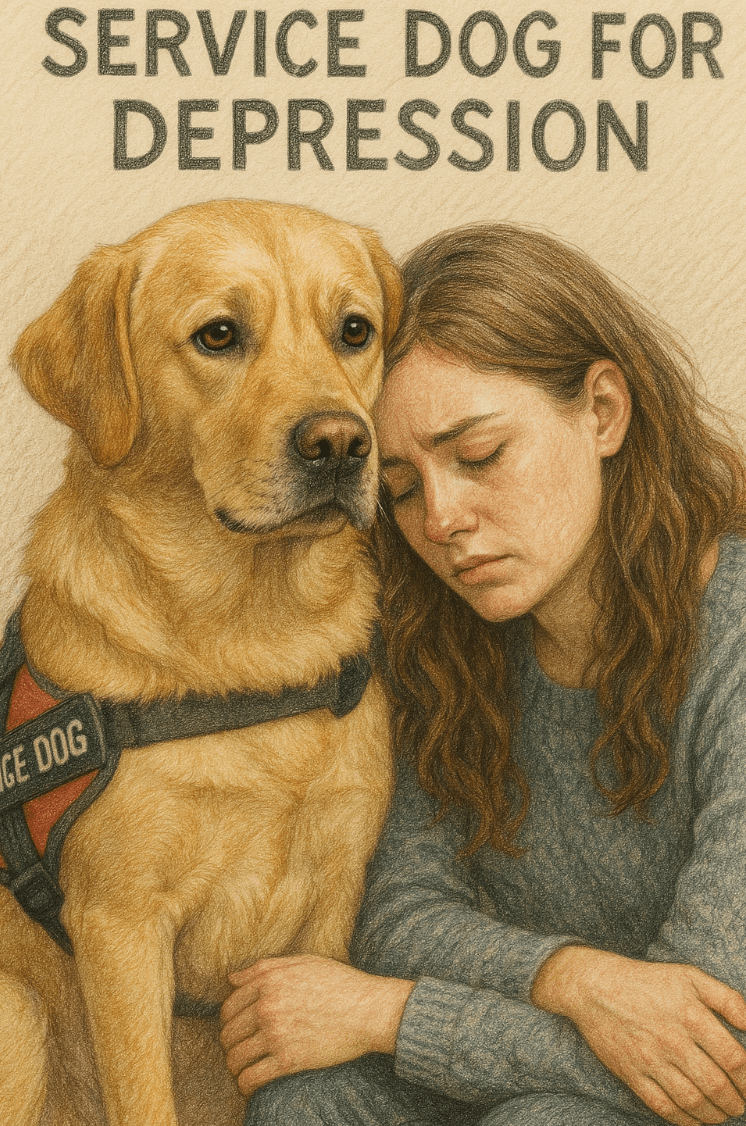Where Is a Dogs Heart Located? Understanding Your Furry Friend’s Anatomy
If you’ve ever wondered where a dog’s heart is located, you’re not alone. Whether you’re a curious pet owner, a veterinary student, or simply someone fascinated by canine anatomy, understanding the location and function of a dog’s heart can deepen your appreciation for these loyal companions. A dog’s heart plays a vital role in their overall health, pumping blood and oxygen to every part of their body. In this blog post, we’ll explore the exact location of a dog’s heart, how it functions, and why this knowledge matters. By the end, you’ll have a clearer understanding of your dog’s cardiovascular system and how to recognize potential issues.
Where Exactly Is a Dog’s Heart Located?
A dog’s heart is located in the thoracic cavity, just like in humans, but its exact position might surprise you. Understanding the anatomical landmarks can help you pinpoint its location. Here’s what you need to know:
Behind the Sternum: The heart sits behind the sternum (breastbone), slightly to the left of the midline.
Between the Lungs: It is nestled between the lungs, protected by the rib cage.
Near the Elbows: The heart’s base aligns with the level of the dog’s elbows when they are standing.
Tilting Toward the Left: The apex (pointed end) of the heart tilts slightly toward the left side of the chest.
Size Relative to the Chest: A dog’s heart is roughly the size of their clenched fist, depending on their breed and size.
Knowing where the heart is located can help you better understand your dog’s anatomy and identify potential signs of cardiac issues. Its placement ensures protection while allowing efficient blood circulation throughout the body.
Functions of a Dog’s Heart
The heart is the engine of your dog’s circulatory system, responsible for keeping their body functioning optimally. Each beat delivers oxygen-rich blood to tissues and organs, supporting their active lifestyle. Here’s a breakdown of its key functions:
Pumping Blood: The heart pumps oxygenated blood from the lungs to the rest of the body and returns deoxygenated blood to the lungs.
Maintaining Circulation: It ensures nutrients, hormones, and waste products are transported efficiently throughout the body.
Regulating Blood Pressure: The heart helps maintain consistent blood pressure, which is crucial for organ health.
Supporting Activity Levels: A strong heart supports high energy levels, enabling dogs to run, play, and explore.
Adapting to Stress: During physical exertion or stress, the heart adjusts its rhythm to meet increased demands.
The heart’s ability to perform these functions is essential for your dog’s vitality and longevity. Any disruption in its operation can lead to serious health concerns, making regular check-ups vital for early detection of issues.
Check this guide 👉Understanding Dog Heart Rate: Best 7 Expert Tips!
Check this guide 👉Understanding Heart Murmur Medication for Dogs: Best 7 Tips!
Check this guide 👉Signs of a Dog Dying of Heart Failure: Best 7 Expert Tips!

Anatomical Landmarks | Description |
|---|---|
Behind the Sternum | The heart is positioned just behind the breastbone. |
Between the Lungs | Protected by the lungs and rib cage. |
Near the Elbows | Aligns with the level of the dog’s elbows. |
Slightly to the Left | The apex tilts toward the left side of the chest. |
Size Relative to the Chest | Roughly the size of the dog’s clenched fist. |
Signs of Heart Problems in Dogs
While knowing where a dog’s heart is located is important, recognizing signs of potential heart issues is equally critical. Early detection can make a significant difference in treatment outcomes. Here are some common symptoms to watch for:
Coughing: Persistent coughing, especially at night, can indicate heart disease or fluid buildup in the lungs.
Lethargy: Unexplained tiredness or reluctance to exercise may signal a weakened heart.
Difficulty Breathing: Rapid or labored breathing could point to heart-related complications.
Swollen Abdomen: Fluid retention in the abdomen (ascites) may occur due to poor circulation.
Fainting or Collapse: Episodes of fainting or sudden collapse require immediate veterinary attention.
If you notice any of these signs, consult your veterinarian promptly. Regular monitoring and timely intervention can improve your dog’s quality of life significantly.
Tips for Supporting Your Dog’s Heart Health
Taking proactive steps to support your dog’s heart health can help prevent issues and ensure a long, happy life. Here are some practical tips to keep their cardiovascular system in top shape:
Provide a Balanced Diet: Feed your dog nutrient-rich food that supports heart health, such as foods high in omega-3 fatty acids.
Encourage Regular Exercise: Daily walks and playtime help maintain a healthy weight and strengthen the heart.
Schedule Routine Check-Ups: Annual vet visits allow for early detection of potential heart problems.
Monitor for Symptoms: Stay vigilant for signs of heart issues, such as coughing or lethargy.
Avoid Stress: Minimize stressful situations to reduce strain on your dog’s heart.
By following these tips, you can promote a healthy heart and overall well-being for your furry friend. Prevention and care go hand in hand when it comes to heart health.
Common Heart Conditions in Dogs
While dogs are resilient creatures, they can still suffer from a variety of heart conditions. Understanding these conditions can help you recognize symptoms early and seek appropriate care. Here are some common heart-related issues in dogs:
Congestive Heart Failure (CHF): A condition where the heart struggles to pump blood effectively, leading to fluid buildup in the lungs or abdomen.
Mitral Valve Disease: A degenerative condition where the mitral valve doesn’t close properly, causing blood to leak backward.
Dilated Cardiomyopathy (DCM): A disease that weakens the heart muscle, reducing its ability to pump blood efficiently.
Heartworm Disease: Caused by parasitic worms that invade the heart and lungs, often transmitted through mosquito bites.
Arrhythmias: Irregular heartbeats that can disrupt normal blood flow and lead to fatigue or fainting.
By familiarizing yourself with these conditions, you can better advocate for your dog’s health. Early diagnosis and treatment are key to managing these issues effectively.
Breeds Prone to Heart Problems
Certain dog breeds are more susceptible to heart conditions due to genetic predispositions. If you own one of these breeds, it’s important to be extra vigilant about their heart health. Here are some breeds commonly affected:
Cavalier King Charles Spaniel: Prone to mitral valve disease, which affects their heart valves.
Boxer: At higher risk for arrhythmogenic right ventricular cardiomyopathy (ARVC), a type of heart muscle disease.
Doberman Pinscher: Often develops dilated cardiomyopathy, which can progress rapidly.
Dachshund: Susceptible to degenerative mitral valve disease, particularly as they age.
Golden Retriever: May experience subaortic stenosis, a narrowing of the area below the aortic valve.
Knowing if your dog’s breed is predisposed to heart issues allows you to take preventive measures and schedule regular screenings. Awareness can make all the difference in catching problems early.
Ways to Monitor Your Dog’s Heart Health at Home
Monitoring your dog’s heart health doesn’t always require a trip to the vet. There are simple ways to keep an eye on their cardiovascular system from the comfort of your home. Here are some practical methods:
Check Their Pulse: Feel for your dog’s pulse under their hind leg near the femoral artery and compare it to their normal resting rate.
Observe Breathing Patterns: Count how many breaths your dog takes per minute while resting; rapid breathing could indicate a problem.
Track Activity Levels: Note any changes in energy or enthusiasm during walks or playtime.
Inspect Gums: Healthy gums should be pink and moist; pale or bluish gums may signal poor circulation or oxygenation.
Monitor Weight: Sudden weight gain or loss can place additional strain on the heart and should be addressed promptly.
By incorporating these practices into your routine, you can stay ahead of potential issues and ensure your dog remains healthy. Early detection through observation can save lives.
Frequently Asked Questions About a Dog’s Heart
Where is a dog’s heart located?
A dog’s heart is located behind the sternum, slightly to the left of the midline, and between the lungs.
How big is a dog’s heart?
The size of a dog’s heart varies by breed but is generally about the size of their clenched fist.
What are the signs of heart problems in dogs?
Common signs include coughing, lethargy, difficulty breathing, swollen abdomen, and fainting.
Can diet affect my dog’s heart health?
Yes, a balanced diet rich in essential nutrients can support heart health and prevent issues like obesity.
When should I see a vet about my dog’s heart?
Consult a vet if you notice symptoms like persistent coughing, lethargy, or difficulty breathing, as these could indicate heart problems.
In Conclusion: Understanding and Caring for Your Dog’s Heart
Understanding where a dog’s heart is located and how it functions is more than just an academic exercise—it’s a crucial step in ensuring your pet’s well-being. From its position in the thoracic cavity to its vital role in maintaining circulation, the heart is truly the lifeline of your furry companion. By staying informed about potential health issues and taking proactive steps to support their cardiovascular system, you can help your dog live a longer, healthier life. Remember, a happy dog starts with a healthy heart, and your love and care are the foundation of their happiness. So, take the time to nurture your dog’s heart, and they’ll reward you with endless loyalty and joy.
Omega Benefits Canine: Best 7 Expert Tips! Discover how omega fatty acids boost your dog’s health, from skin and coat to joints and immunity, with expert advice for optimal canine wellness.
Service Dog for Depression: Best 7 Expert Tips! Discover how service dogs provide emotional support, perform vital tasks, and improve mental health for individuals managing depression.
Is a Great Pyrenees a Family Dog? Best 7 Expert Tips! Discover expert advice on temperament, care, and training to determine if this gentle giant is the perfect family companion for your home.
Munsterlander Dog: Best 7 Expert Tips! Discover expert advice on training, care, and living with this intelligent, energetic breed for a happy and healthy companion.





